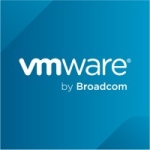Monitoring of customer applications.
It has performed well. I won't necessarily say better than other solutions, but there's more focus because of the customer applications.
A good example for us is Hurricane Irma. We have service territory that was impacted and our executive dashboard for APM was up and everybody under the sun was watching that, and keying off of that, for issues that were popping up, because we were performing storm restoration.
The executive dashboard we created gives a lot of visibility out there, so from that standpoint if somebody sees something go red and they say, "Hey, what's going on?" we have to be on our toes. There's no working on something for a little bit before someone knows.
But having said that, there's a lot of flexibility in being able to see stuff in those customer systems, which is vital for us.
The ability to have anything we want scripted feeding in there, and to add to it fairly quickly. So if we do see something that we need to change or monitor, we need to add something, we're able to get those in pretty quickly.
For example, finding something that's not performing well on one of our applications. We had one not too long ago where we simply didn't have a threshold on something, something we hadn't seen before. We found it, and then were able to get in and put something in pretty quickly. So now we're prepared for that situation in the future.
The APM SQL feature doesn't perform like we would like it to, and we actually have some open cases that are working through that. I know that's a new feature with 10.5, so it may be one of those things that gets a little better. But I would like to see that improved because, although it's not a major problem, we feel like it should run faster.
One to three years.
The stability is very good. We recently upgraded to 10.5, and the performance has been fantastic, especially since the upgrade. We had a few minor things before the upgrade, but once we've upgraded it's run like a champ.
No issues with scalability. We're able to add stuff to it without any issue. We've got a decent license count so there are no issues there, it's been easy.
We have used tech support. I would evaluate it as so-so. Part of the issue is, I've got some seasoned guys. Tech support is always saying, "Hey, what's with these log files," and the like, and we feel that we waste some time upfront because we've already checked A, B, and C. It's like if you called tech support, and they say ,"Well have you turned your computer on and off?" "Yes, I've done all that!" It's like that. We go through some stuff that we feel if we skip that we might get to some resolution faster.
With version 10.5, we went to it fairly early and we discovered some things that broke some things in the past. We did get through those. But I would say the bigger issue is, if we're at point A and we want to get to D, we want to skip B and C.
We do get the right person when we call, there's not really any run around.
And we have, I don't know what her title is, a service manager, and we meet every couple of weeks to review all the cases, and I feel that if something's not getting addressed she'll help us escalate that or push it forward. It's just some of the upfront stuff that gets a little frustrating at times.
My most important criteria when selecting a vendor have to do with the issue that vendors say, "Yeah we can do this, yeah we can do that." I want to see examples of where you did that. And I want to understand how hard it is to get to that point. Because a lot of times, sure, they can do that, but it entails all of this work, or all of this customization and maintenance and, at the end of the day, it may be a huge issue to get to that point. I want more transparency.
And if it is that that additional work, that may be okay, but we want to know about it ahead of time so we can plan for it.
Brand may be important, but sometimes companies get lazy, saying, "We're so and so," and they don't feel they have to work as hard. I know there's a vendor that we had - not CA - but it was just, whatever you're doing, you know that you're going to have problems. They are a big brand name and they just do a poor job. So that's why I say the brand doesn't always make that big of a difference because it's more about your ability to come through and deliver on your commitments. And deliver on your commitments, meet deadlines, without us having to do a fire drill every day.
I give CA APM a nine out of 10. It does a really good job for us, the infrastructure seems pretty easy to maintain. We had to do an upgrade so that obviously threw a bunch of work in there but, outside of that, it seems to run pretty smoothly so we're not spending a bunch of time dealing with that. We're able to work with the monitoring functions of it and set some things up.
The Team Center piece seems to be working really well now, we're starting to implement some of that so it's taking advantage of some functionality that was already there but didn't really work that well. We're starting to use that and add some more value to our customers.
Based on those things I'd give it a little bump up. It works well for us, gives a lot of visibility.
I would recommend it to a friend. I would just say make sure you understand your environment, and compare your environment to somebody that's already implemented, to understand some of that work. Get the right reference call.
















Thanx Jai for sharing valuable inputs about CA APM